About SAG15:
The SAG15 study is led by Daniel Apai (University of Arizona). The SAG15 team is charged with studying high-level science questions that can be answered by direct imaging studies of exoplanets and identifying the type and quality of data these studies require. The SAG15 study does not focus on any particular telescope architecture or observational method, but on the fundamental science questions.
SAG15 Report: SAG15 Report, June 18, 2017
Status Update
SAG15 Status Summary / EXOPAG 2017 Winter
SAG15 Report Drafts:
SAG15 Report Draft, June 17, 2017
SAG15 Report Draft, May 3, 2017 (Near-final version – please send comments by May 10)
SAG15 Report Draft, April 27, 2017 (High resolution)
SAG15 Report Draft, April 26, 2017
SAG15 Report Draft, April 14, 2017 (High-res figures)
SAG15 Report Draft, April 4, 2017
SAG15 Report Draft, January 2, 2017
SAG15 Report Draft, 2nd December 15, 2016
SAG15 Report Draft, December 15, 2016
SAG15 Draft Report, December 14, 2016
SAG15 Draft Report, November 15
SAG15 Report, Advanced Draft, Oct 11
Versions below typeset in Pages:
SAG15_Report Draft_High Level Science Question – June 11, 2nd
SAG15_Report Draft_High Level Science Questions – June 11
SAG15 Report Draft High Level Science Questions – May 30
SAG15 Report Draft High Level Science Questions – May 29
SAG15 Report Draft High Level Science Questions – May 28
SAG15 Report Draft High Level Science Questions – May 9
SAG15 Report Draft High Level Science Questions – April 25
SAG15_Report Draft_High Level Science Questions – April 5
SAG15_Report Draft_Report_Feb5-2016
SAG15 Telecon Slides and Telecon summaries:
SAG15_Telecon3_Minutes (April 6, 2016)
SAG15 Telecon 2 slides (Apai, March 2, 2016) SAG15 Telecon 2 Minutes
SAG15 Telecon 1 (Dec 2015) SAG15 Telecon 1 Minutes
SAG15 Supporting Documents:
ADS Library for SAG15-related publications
Link to ESA Phase 0 Studies for M4 Cosmic Vision Candidate Missions
Report from the NExSS Kick-off Meeting at NASA HQ
A blog entry on the kick-off meeting of the new NExSS program at NASA HQ by PI Daniel Apai: http://distantearths.com/nexss-kick-off/
UA, ASU teams to search for alien life
Article appeared in the Arizona Daily Star: http://tinyurl.com/nteh6h4 April 22, 2015 7:29 pm • By Tom Beal “I think we’re going to have strong indications of life beyond Earth within a decade, and I think we’re going to have definitive evidence within 20 to 30...
NExSS Program and EOS Selection Announced
NASA’s NExSS Coalition to Lead Search for Life on Distant Worlds NASA is bringing together experts spanning a variety of scientific fields for an unprecedented initiative dedicated to the search for life on planets outside our solar system. The Nexus for Exoplanet...
Volatile Delivery to Planets around Red Dwarf
EOS team investigators Fred Ciesla, Ilaria Pascucci, and Daniel Apai publish a paper on the delivery of volatiles to low-mass planets orbiting red dwarf stars. The team finds that including more realistic starting conditions (a larger number of planetesimals and...
EOS Postdoctoral Position Opens at U Chicago
Applications are invited for a Postdoctoral Researcher to work on the chemical evolution of protoplanetary disks and primitive materials at the University of Chicago. The successful applicant will work directly with Professor Fred Ciesla and in collaboration with...
Hubble gets best view of a circumstellar debris disk distorted by a planet
Astronomers have used NASA's Hubble Space Telescope to take the most detailed picture to date of a large, edge-on, gas-and-dust disk encircling the 20-million-year-old star Beta Pictoris. Beta Pictoris remains the only directly imaged debris disk that has a giant...
Got Planets? Smaller Stars Are Best Bet
In the search for Earth-size planets elsewhere in the Milky Way, lower-mass stars make for more promising hunting grounds, UA astronomers have discovered. By Daniel Stolte, University Relations – Communication | February 17, 2015 In the search for Earth-size...
EOS Grant Awarded by NASA Astrobiology Program
In December 2014 the NASA Astrobiology program has selected our EOS Team for an award enabling a 5-year, in-depth study of the formation of habitable exoplanets with right set of ingredients to support life. We are excited by the opportunity and looking forward to the...
